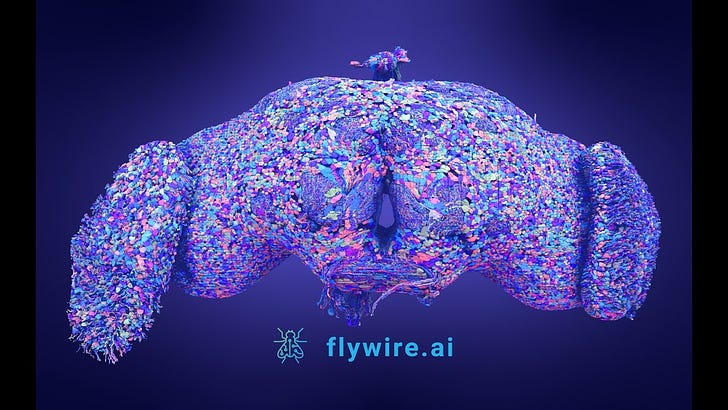We recently wrote about how we can find wonder all around us, if only we open ourselves to its transformative potential. What inspires wonder can be something vast, grand or exotic, as humankind has long been captivated by the so-called Seven Wonders of the World, and more recently transfixed by glimpses of our distant universe (and distant past) through the James Webb Space Telescope. But wonder can also emanate from something small, as William Blake captured in his famous lines: “To see a World in a Grain of Sand / And a Heaven in a Wild Flower / Hold Infinity in the palm of your hand / And Eternity in an hour”.
Recently, researchers completed a decade-long effort to map the brain of an adult fruit fly — an object of enormous complexity, despite being tinier than Blake’s grain of sand. A fly’s brain contains almost 140,000 neurons and around 55 million synapses. Its complete neural wiring, if laid end-to-end, would extend to over 490 feet, which is roughly half the height of the Eiffel Tower.
All this painstaking scientific work has given us the first detailed diagram of how an animal’s brain is wired. Known as a connectome, this model is of tremendous interest to anyone researching the human brain. It is also of interest to computational neuroscientists, who have already programmed a working model of the fruit fly’s brain that can respond to sensory stimuli. Researchers are now working on an even more ambitious project to map a mouse’s brain, which contains about 1,000 times more neurons than a fruit fly.
Such projects can seem abstract — but they hold the keys to an understanding of consciousness and self undreamt of a few decades ago, and have the potential to revolutionize simply everything. The potential for wonder here is immense!



Fabulous visual!
That's a fascinating study. Mapping any brain at all is a herculean task. Love the video, too! Thanks for this.